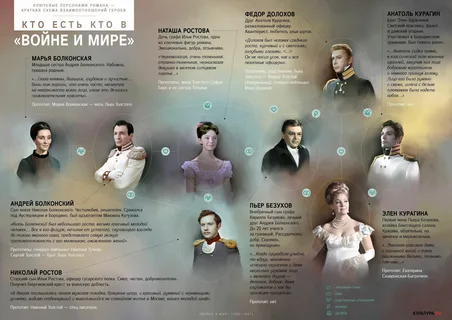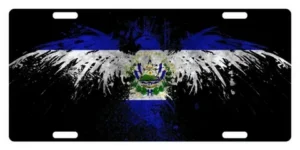What is Çeviviri? Everything You Need to Know About This Term
Table of Contents
Introduction:
Çeviviri is a unique word that many people may not have heard before. When you hear the word “çeviviri,” it might sound a bit confusing at first, but it’s a fascinating term. In simple words, çeviviri often refers to something that spins, turns, or goes in circles. It’s a word that describes movement, and it can be used in different ways depending on the situation.
The word çeviviri has been used in various conversations to talk about things that change or move in cycles. Whether it’s about the turning of the seasons, the spinning of objects, or the changes in life, çeviviri is a flexible word that helps explain these actions. This makes it a useful word in everyday speech.
In this blog, we will explore what çeviviri really means, how people use it, and why it’s such an important word. We will also look at the different ways çeviviri is understood in different places, and how it has become a part of language. By the end of this post, you’ll have a full understanding of çeviviri and its many uses.

What Does Çeviviri Mean? Understanding the Basics
Çeviviri is a word that might sound new to many people, but its meaning is simple. At its core, çeviviri describes something that spins or turns. Think about a wheel on a bicycle or the spinning top you play with. When something moves in circles or turns around, we can use the word çeviviri to describe it. This makes the word useful when talking about things that move or change direction.
Beyond its basic meaning, çeviviri can also be used in a more creative way. For example, we can use çeviviri to talk about the changes in life, like how seasons change from summer to winter. Life sometimes feels like it’s going in circles, with the same events happening again and again. In this case, çeviviri is a good word to use when talking about things that repeat over time.
In some cultures, çeviviri has a deeper meaning. It is not just about spinning or turning but also about cycles and patterns. For example, when something happens over and over again, like the sun rising and setting every day, we can say it’s a kind of çeviviri. This shows how çeviviri can be more than just a word about movement—it’s also about things that come back or happen again.
Another interesting way to think about çeviviri is in nature. When we look at the natural world, we see many examples of çeviviri, like the way the wind blows in circles or the way water flows in a river. Nature is full of movements, and çeviviri is a perfect word to describe these actions. This helps us understand how çeviviri connects to the world around us.
Overall, çeviviri is a simple but powerful word that can be used in many different ways. Whether you’re talking about spinning objects, repeating events, or changes in life, çeviviri is a word that helps describe these movements clearly. Understanding its basics allows you to use çeviviri in everyday conversations and see how it fits into your world.
The History of Çeviviri: Where Did It Come From?
The word çeviviri has an interesting history, though its exact origins are not well-documented. It is believed that çeviviri comes from older words in languages that describe movement and cycles. Ancient languages, especially those connected to nature and the environment, often used similar words to describe the motion of the earth, the wind, and other elements. As languages evolved, çeviviri became more commonly used to talk about spinning or turning objects.
Over time, çeviviri began to be used in different cultures and regions. In some areas, it was used specifically to describe natural movements, such as the wind blowing or the turning of the moon. The idea of things repeating or going in circles made çeviviri a useful term for talking about the world around us. This connection to nature helped the word spread and gain importance.
The word çeviviri also became part of everyday speech in many different contexts. As people began to use it more often, çeviviri evolved from a simple term for spinning objects into a more flexible word. It could describe not only physical movements but also abstract concepts like life cycles or repeating events. This change in meaning allowed çeviviri to be used in stories, poems, and even in describing personal experiences.
In some cultures, çeviviri became more than just a word; it became a symbol of change and movement. For example, in ancient folklore, çeviviri was sometimes used to describe the movement of time. People saw the passing of time as a kind of circle or cycle, much like the turning of a wheel. This deeper meaning gave çeviviri a special place in storytelling and cultural traditions.
Today, while the exact origin of çeviviri remains unclear, its history shows how it has evolved over time. From describing simple spinning objects to becoming a symbol for the cycles of life, çeviviri has become a word that connects people to nature, change, and the world around them. Its rich history and flexible meaning make it a word that will likely continue to be used for many years to come.

How People Use Çeviviri in Daily Life
People use the word çeviviri in many ways every day, often without even realizing it. One of the most common ways çeviviri is used is to describe objects that spin or turn. For example, when you watch a top spinning on the floor or a wheel turning on a bicycle, you might hear someone say, “Look, it’s çeviviri!” This helps describe the movement of the object, making it easier for others to understand what’s happening.
Çeviviri is also used to describe events that happen in a cycle or repeat over time. For instance, people might use it when talking about the seasons. As winter turns into spring, and spring changes to summer, this cycle can be described using the word çeviviri. “The seasons are like a çeviviri,” someone might say, pointing out how the weather changes over and over throughout the year.
In daily conversations, çeviviri can also be used to talk about things that keep going in circles. When someone feels like they are going through the same situation repeatedly, they might say, “I feel like I’m stuck in a çeviviri.” This shows how the word can be used to describe feelings of repetition or being trapped in a never-ending situation. It’s a way of expressing that things don’t seem to change, no matter how much time passes.
Çeviviri can even be used in games and activities. For example, in a fun game where objects spin or rotate, players might shout “çeviviri!” when something spins really fast. This adds excitement to the game and helps everyone stay involved. It’s a playful use of the word, and it shows how çeviviri can make everyday situations more fun and energetic.
In many ways, çeviviri has become a word that people use to describe not only physical movements but also ideas and emotions. It connects the way we experience the world with how we communicate about it. Whether you’re talking about spinning objects, the passing of time, or repeating events, çeviviri is a word that helps us make sense of the world in a simple and effective way.
Different Ways to Interpret Çeviviri
Çeviviri is a word that can be interpreted in many different ways, depending on the context. While it often refers to spinning or turning, the meaning of çeviviri can change based on how it’s used in a sentence. One of the most common ways to interpret çeviviri is by thinking of it as the movement of something in circles. For example, a spinning wheel or a rotating fan can easily be described as çeviviri. In this case, it’s all about motion, and the word helps describe that circular or repetitive movement.
However, çeviviri can also be interpreted in a more abstract way. It’s not just for describing physical movements; it’s often used to talk about things that repeat or cycle. For example, the changing of the seasons can be seen as a type of çeviviri. Winter turning into spring, then into summer, and back to fall – this repeating pattern can be described using çeviviri. It’s a way of looking at the world and recognizing how things come back around in cycles.
Another interpretation of çeviviri is in the context of emotions and experiences. When someone feels like they are stuck in a loop, going through the same problems over and over again, they might use çeviviri to express how they feel. “Life feels like a çeviviri,” they might say, describing the repetitive nature of their experiences. In this way, çeviviri can reflect the idea of being trapped in a never-ending cycle, which is a common feeling people experience at some point in their lives.
In some cases, çeviviri can also be interpreted symbolically, representing change or transformation. Just as a spinning object changes its position with every turn, çeviviri can symbolize how life is always in motion. This interpretation is often used when talking about growth or progress. When people say, “Change is like a çeviviri,” they are suggesting that change doesn’t happen all at once but instead moves in cycles, gradually shifting over time.
Lastly, çeviviri can be understood in a playful or creative way. For example, in games or storytelling, çeviviri can be used to describe exciting, fast movements, like the spinning of a game piece or a character’s action in a story. This fun interpretation of çeviviri adds a sense of excitement and energy to the moment. It shows that the word is flexible and can take on different meanings based on the situation.

Why Is Çeviviri Important?
Çeviviri is important because it helps us describe the world around us in a simple and clear way. Whether we’re talking about spinning objects, repeating events, or even feelings of being stuck in a cycle, çeviviri is a word that makes it easier to communicate these ideas. By using a single word, we can explain complex movements and patterns, making it a helpful tool for understanding how things work in nature and in our daily lives.
Another reason çeviviri is important is that it reflects the way life works. Life is full of cycles—seasons change, days pass, and sometimes we experience the same situations over and over. Çeviviri captures this idea of repetition and movement, making it easier for people to talk about these natural rhythms. Without this word, it would be harder to express the idea of things coming back around or returning to where they started.
Çeviviri also plays a role in emotional expression. When people feel like they are stuck in a loop, doing the same things over and over without change, çeviviri can describe that feeling. It gives people a way to express frustration or confusion in a way that others can understand. For example, if someone says, “I feel like I’m in a çeviviri,” they are able to describe their experience of feeling trapped or like things aren’t moving forward. This helps people connect with each other and share their feelings in a meaningful way.
The word çeviviri is also important because it connects us to nature. Many natural processes happen in cycles, like the water cycle, the changing of the seasons, and the way animals migrate. Çeviviri is a perfect word for describing these ongoing movements that don’t have a clear start or finish. It allows us to appreciate the constant flow of nature and the world around us. This connection to nature makes çeviviri more than just a word—it becomes a way to understand how life itself operates.
Finally, çeviviri is important because it is a word that can bring excitement and energy to conversations. Whether it’s used to describe a spinning game piece or the whirlwind of emotions someone is feeling, çeviviri adds a sense of action to what might otherwise be a boring topic. It helps make our language more lively and colorful, reminding us that words aren’t just tools for communication—they can also bring energy and life to our discussions.
Common Mistakes People Make with Çeviviri
One common mistake people make when using the word çeviviri is misinterpreting its meaning. Some people might think it only refers to physical objects that spin, like a wheel or a top. While it is often used this way, çeviviri also has a broader meaning. It can describe cycles, repeating events, and even emotions, not just the movement of spinning objects. So, it’s important to remember that çeviviri can be used to talk about more than just things that move in circles.
Another mistake is overusing the word çeviviri. Because it describes many types of movements and changes, it might seem tempting to use it in every situation. However, it’s important to use it correctly and not to force it into conversations where a different word would be more appropriate. Overusing çeviviri can make it lose its meaning or make your sentence sound unnatural. It’s best to use çeviviri when it truly fits, like when describing cycles or repetitive actions, to keep your language clear and precise.
Sometimes, people might also use çeviviri when talking about actions that don’t involve movement at all. For example, saying “My homework is çeviviri” wouldn’t make sense because homework isn’t something that moves or changes in a cycle. It’s important to use çeviviri for things that actually fit the definition—spinning, turning, or repeating. Using it in the wrong context can confuse the listener or make your meaning unclear.
Another mistake people often make is using çeviviri to describe things that only happen once. Since çeviviri refers to things that happen repeatedly or in cycles, using it for one-time events isn’t quite right. For example, saying “I saw the sun rise, and it was çeviviri” wouldn’t make sense unless you’re talking about how the sun rises every day in a cycle. This mistake can make the word feel out of place and reduce its meaning.
Lastly, people sometimes misunderstand the deeper meanings of çeviviri. While it’s easy to think of çeviviri as just a word for spinning objects, it can also have symbolic meanings, like representing change or personal growth. Using the word only in a literal sense can limit its full power and beauty. To really understand and use çeviviri well, it’s important to also consider its more abstract meanings, like life’s cycles or personal experiences of change.

Fun Facts About Çeviviri You Didn’t Know
Did you know that the word çeviviri has more meanings than just describing things that spin? While it’s most commonly used for physical movement, çeviviri also plays a big role in talking about the cycles of nature. For example, the changing seasons, the water cycle, and even the way plants grow can all be described using çeviviri. It’s a word that connects the movement in nature to the way we experience time and life itself!
Another fun fact about çeviviri is that it is a word with a very playful side. When used in games or fun activities, çeviviri can describe exciting moments when something spins fast or moves in an unexpected way. Kids often shout “çeviviri!” during these moments, making it a word that brings energy and excitement to any game. It’s a word that turns an ordinary situation into something fun, adding a special touch to playtime.
Çeviviri also has a symbolic meaning that many people don’t know about. In some cultures, it’s seen as a symbol of change and transformation. Just like how a spinning wheel moves forward with every turn, çeviviri is sometimes used to represent how people grow and change over time. It shows that life isn’t static, and just like the turning of a wheel, things are always moving and evolving. This deeper meaning gives the word a sense of wisdom and understanding of life’s natural flow.
Here’s another interesting tidbit—çeviviri can be used to describe more than just physical objects! In some stories or poems, çeviviri is used to represent life’s repeating cycles or the feelings of being stuck in a routine. When someone feels like they are doing the same thing over and over again, they might say, “I’m stuck in a çeviviri,” to express the idea of repetition. This shows how the word can be flexible and meaningful in many different ways.
Lastly, çeviviri is a word that has been passed down through generations, yet it still feels fresh and relevant today. Even though it has ancient roots, people continue to use it in modern times to describe everything from the seasons to their daily activities. Its ability to adapt to new situations while holding onto its core meaning is one of the reasons why çeviviri remains such an important and fun word to use.
How Çeviviri Affects Language and Culture
Çeviviri has a unique way of influencing both language and culture. In many cultures, words like çeviviri aren’t just about describing actions; they reflect the way people think about the world. Since çeviviri is used to describe cycles, movements, and repeating events, it helps shape how we view time and change. It encourages people to think in patterns, seeing the world as a series of interconnected events, rather than separate, unrelated moments. This cultural mindset can affect how people approach life, focusing on the natural flow of things rather than trying to control everything.
In language, çeviviri plays an important role in making communication more expressive. When we talk about things like seasons or life’s changes, çeviviri offers a simple but powerful way to explain these concepts. Without it, we might struggle to find the right words to describe cycles or repeating events. In a way, the word gives us the tools to talk about nature and life’s movements in a more meaningful way, showing how language can shape how we understand the world.
Culturally, çeviviri helps connect people to their traditions and beliefs. In some cultures, the idea of repetition or cycles is deeply important. For example, festivals or rituals that happen every year can be described with çeviviri, helping people celebrate and understand the importance of those repeating events. This connection to tradition makes çeviviri more than just a word—it becomes a symbol of continuity, linking past, present, and future generations together in a shared cultural experience.
Çeviviri also influences storytelling. In many stories, especially folk tales and myths, cycles of change, transformation, and repetition are key themes. The use of çeviviri in these stories helps bring those themes to life, adding layers of meaning to the tales. Whether it’s the turning of the seasons or a hero’s journey that repeats, the word çeviviri helps narrate these cycles in a way that connects the characters and events to the larger patterns of the world. This makes stories more relatable and meaningful, especially for audiences who see their own lives reflected in the cycles of nature.
Finally, çeviviri has a way of shaping how we talk about life’s challenges. When people are going through tough times, they might use çeviviri to express the feeling of being stuck in a routine or caught in an endless loop. This use of the word shows how language can influence how we feel about our struggles. By describing our challenges as a “çeviviri,” we can acknowledge that they are temporary and part of a larger cycle, which can offer comfort and a sense of hope.

Çeviviri in Modern Conversations: How to Use It
In modern conversations, çeviviri is often used to describe things that move in circles or repeat over time. One of the most common ways to use çeviviri in casual talk is when referring to objects that spin or rotate. For example, when talking about a fan or a wheel, someone might say, “Look, it’s çeviviri!” This helps make it clear that the object is spinning, and it adds a bit of fun to the conversation. It’s a playful way to describe things in motion, making everyday moments more interesting.
Another way çeviviri is used today is when talking about events or situations that keep repeating. For instance, if someone feels like they are stuck doing the same thing every day, they might say, “My life feels like a çeviviri.” This can describe feelings of being caught in a loop or cycle, where nothing changes, and everything seems to be repeating. It’s a great way to express the frustration of not seeing any progress, yet in a simple and relatable way.
Çeviviri can also be used to describe changes that happen gradually over time. For example, people might use it when talking about the seasons, or even personal growth. If someone is talking about how they’ve changed over the years, they might say, “It’s been a long çeviviri, but I’ve learned a lot.” This shows how the word can be used to express progress or transformation that happens in cycles, rather than all at once. It reflects how life moves forward, little by little, just like the turning of a wheel.
In modern conversations, çeviviri can also be used in a more fun and energetic way. For example, during a game where players are spinning a top or rolling a dice, they might shout “Çeviviri!” as the object spins. This adds excitement to the moment and turns a simple action into something more lively and engaging. It shows how the word has a playful side that can turn any activity into something fun, bringing energy and joy to conversations.
Lastly, çeviviri can be a great way to express the idea that everything is always in motion. When someone talks about how things are constantly changing or shifting, they might use çeviviri to emphasize that nothing stays the same forever. For example, “The world is always in a çeviviri, and things are always changing.” This highlights how the word can be used to express the ongoing flow of life, where everything keeps moving, turning, and evolving in cycles.
Comparing Çeviviri with Other Similar Words
Çeviviri shares some similarities with other words that describe movement, but each has its own unique meaning and usage. For example, words like “spin,” “rotate,” and “cycle” all have connections to movement, yet they aren’t quite the same as çeviviri. While “spin” and “rotate” focus mainly on the action of turning around a center point, çeviviri carries a deeper meaning, often representing repetition or a return to the starting point. It’s not just about moving in circles, but about things that keep coming back in a repeating pattern.
The word “cycle” is another close comparison. It refers to things that happen in a repeated, predictable way, much like çeviviri. However, “cycle” is more often used in formal contexts or scientific discussions, such as the water cycle or the life cycle of plants. Çeviviri, on the other hand, is more casual and can be used to describe both physical movement and abstract concepts like emotions or life’s patterns. So, while both words describe repetition, çeviviri tends to be more flexible and can apply to a wider range of situations, making it more relatable in everyday conversations.
“Spin” is a word commonly used to describe the quick, circular motion of an object. While spin focuses strictly on the motion itself, çeviviri can represent more than just the movement. It can be used to describe the cyclical nature of things like time, seasons, or emotions. For example, “spin” might describe the movement of a top or a wheel, while çeviviri can be used to describe the changes we go through in life. This makes çeviviri a more comprehensive word for expressing the idea of continuous cycles, beyond just motion.
Another word often compared to çeviviri is “turn.” While both words describe a change in direction, “turn” is typically more limited to one-time actions, like turning a corner or turning a page. Çeviviri, however, is used to describe ongoing or repeated motions, often implying that something is coming back around. For instance, turning a page might describe a simple act, but saying life is like a çeviviri suggests a deeper pattern, where things keep going in circles, returning to where they began.
Finally, “revolve” is another word that describes circular movement, like çeviviri. While “revolve” often refers to large, fixed movements like the Earth revolving around the Sun, çeviviri can be used for smaller, more personal cycles, such as feelings or routines. Revolve tends to be more formal and specific, often used in scientific contexts, whereas çeviviri is more informal and versatile, making it easier to use in everyday language when talking about repetition or change.
Çeviviri Around the World: Does It Change?
The word çeviviri has a unique charm that makes it adaptable across different cultures and languages. While it originates from a specific language, its core idea—cycles, repetition, and movement—can be understood universally. In different parts of the world, people use similar words or phrases to describe cycles or things that repeat, showing how çeviviri shares a global connection. Even if the word itself isn’t used everywhere, the concept it represents—things that keep turning or returning—is understood in many cultures, making çeviviri a part of a larger, shared experience.
However, çeviviri does change in its usage depending on where you are. In some regions, the word might be used more commonly to describe physical movement, like spinning objects or turning wheels. In other areas, it might take on a more symbolic or abstract meaning, referring to life cycles, emotional patterns, or even the flow of time. This flexibility allows çeviviri to adapt to the local language and culture, offering a word that feels personal and specific to each place, even as it holds onto its original meaning.
In some cultures, çeviviri might be linked closely to folklore or traditional practices. For example, in certain societies where rituals or ceremonies are repeated every year, çeviviri can be used to describe the way these practices return, creating a sense of continuity and connection with the past. This cultural connection adds depth to the word, turning it from a simple term into something that carries the weight of history and tradition. In this way, çeviviri is not just a word, but a reflection of how people understand time and repetition within their culture.
On the other hand, in more modern contexts, çeviviri can take on a new meaning. With the rise of technology and social media, the idea of cycles and repetition has become more prominent in conversations. People might use çeviviri to talk about repeating patterns in their daily lives, like getting stuck in a routine or dealing with recurring problems. It shows how the word has evolved, keeping its original meaning while adapting to the modern world and the way we talk about life’s patterns today.
Despite the differences in usage around the world, one thing remains constant: çeviviri is a powerful word that helps people understand and describe the repetitive nature of life. Whether it’s used to describe the changing seasons, the spinning of a wheel, or the repetition of events in one’s life, çeviviri connects people across cultures by representing the shared experience of cycles and movement. In this way, çeviviri remains relevant, showing how language and meaning can evolve, yet still carry the same fundamental truth.

What the Future Holds for Çeviviri: Will It Become More Popular?
As the world continues to change and evolve, the word çeviviri has the potential to become more popular in the future. With the rise of global communication, many words are shared across cultures and languages, especially through social media and digital platforms. As people from different parts of the world begin to connect more, the concepts represented by words like çeviviri could spread, leading to a greater appreciation for its meaning. The idea of cycles, movement, and repetition is something everyone can relate to, making çeviviri a word that could grow in usage as people seek to express these universal experiences.
Moreover, as more people explore the connections between nature, time, and personal growth, çeviviri could find new relevance. In a world where people are increasingly interested in mindfulness, wellness, and the natural world, the concept of cycles and repetition is especially important. Çeviviri could be used more often to describe the repeating patterns in life, such as the changing seasons, the rise and fall of emotions, or even the ebb and flow of challenges we face. As these ideas gain more attention, çeviviri might become a key word to describe these aspects of life, contributing to its growth in popularity.
The way language evolves also points to the potential for çeviviri to become more widely used. As language adapts to the needs of society, words often shift to meet new ways of thinking and talking. Çeviviri is a versatile word that can be used in many different contexts—whether to describe movement, change, or even feelings of being stuck in a repetitive loop. Its flexibility makes it a word that could be adopted more frequently in both everyday conversations and even in more formal discussions. People’s interest in expressing abstract concepts could lead to çeviviri gaining more recognition, especially as language continues to evolve to reflect modern experiences.
On the other hand, the popularity of çeviviri could be influenced by cultural trends and interests. As younger generations embrace new ways of expressing themselves and looking at the world, words that reflect the changing nature of life, like çeviviri, could become even more relevant. Its connection to nature, time, and the rhythm of life fits well with the growing interest in sustainable living, self-awareness, and mental health. If more people begin to recognize the importance of cycles in both the environment and in their own lives, çeviviri could emerge as a key term in describing these processes.
In conclusion, while it’s hard to predict exactly how the future will unfold, çeviviri has the potential to become more popular in the coming years. Its rich meaning, combined with its versatility, makes it a word that could find its way into more conversations and cultural expressions. As society continues to embrace the idea of cycles, repetition, and personal growth, çeviviri might just be the perfect word to describe these experiences, helping it grow in both usage and significance.
Conclusion:
Çeviviri is a special word that helps us talk about things that move or change. Whether it’s about spinning, cycles, or things happening again and again, çeviviri is a simple yet powerful word. It can be used in many ways, and it helps us describe the world around us. From everyday life to fun games, çeviviri can fit in different conversations.
As we learned, çeviviri is important because it shows how things in life are always moving and changing. It helps us understand these movements better. Now that you know what çeviviri means and how to use it, you can try using it in your own words and see how it fits into your world.














Post Comment